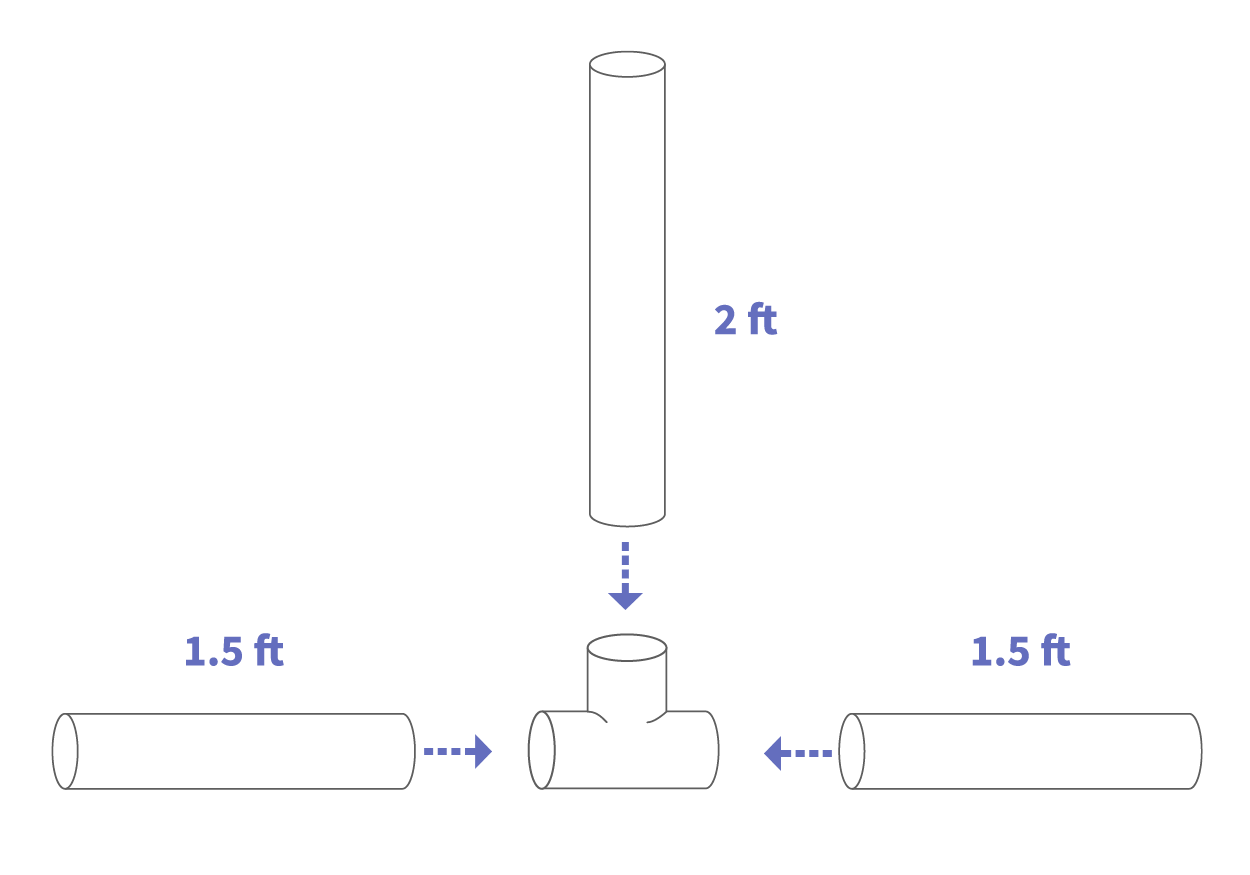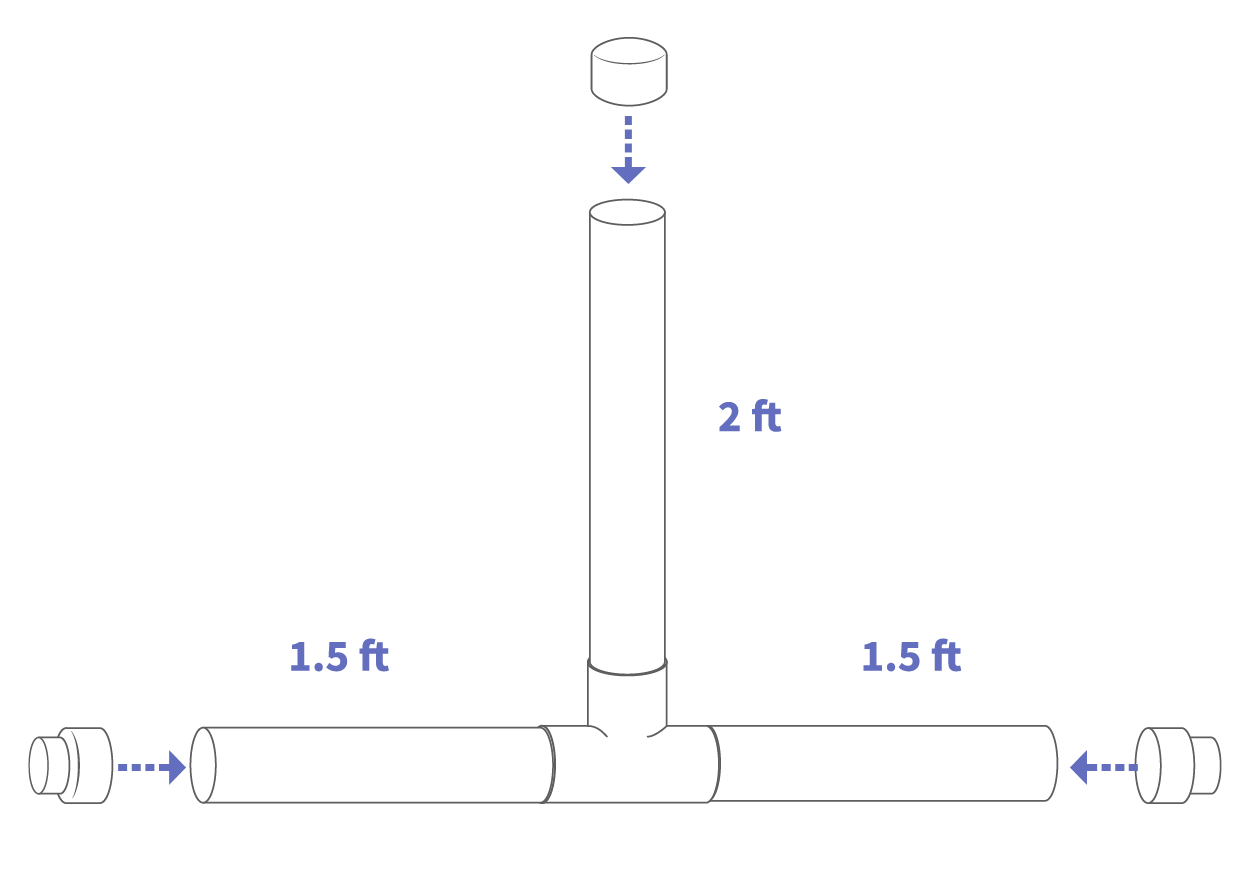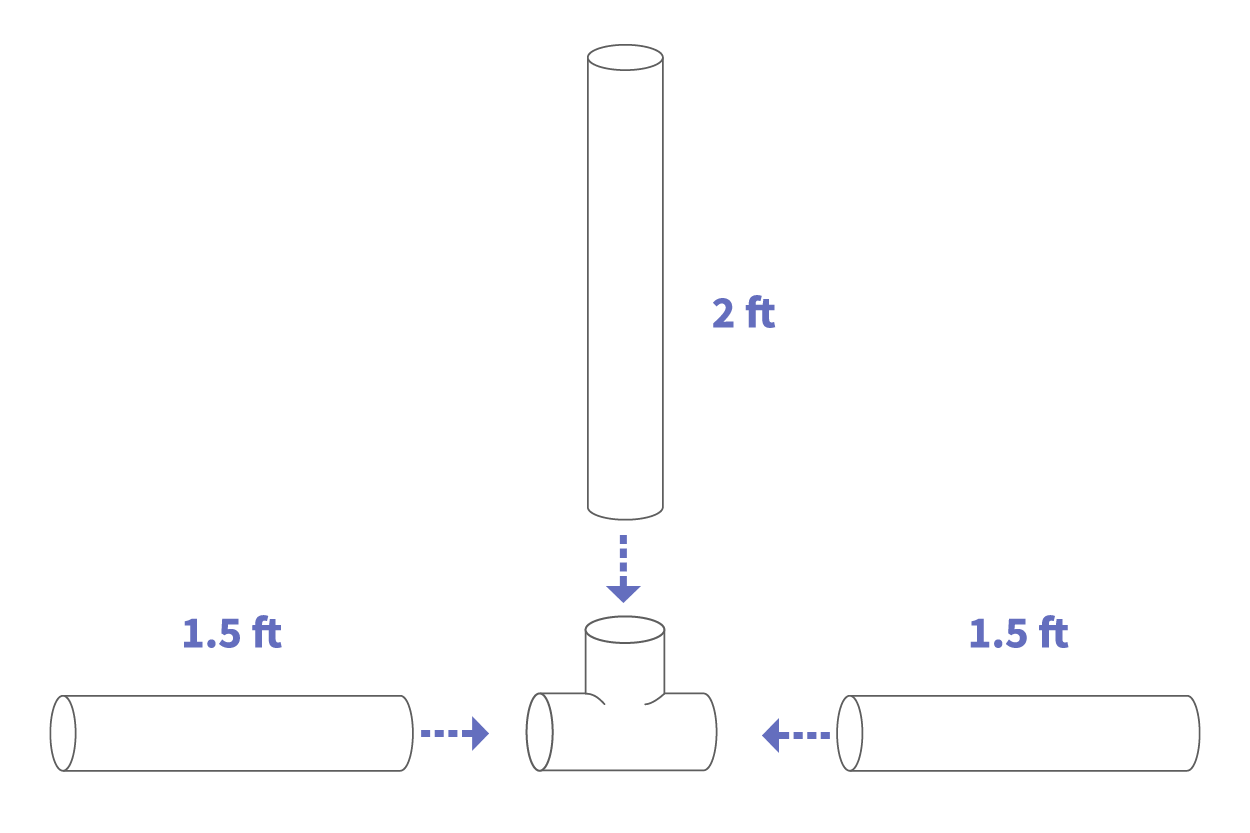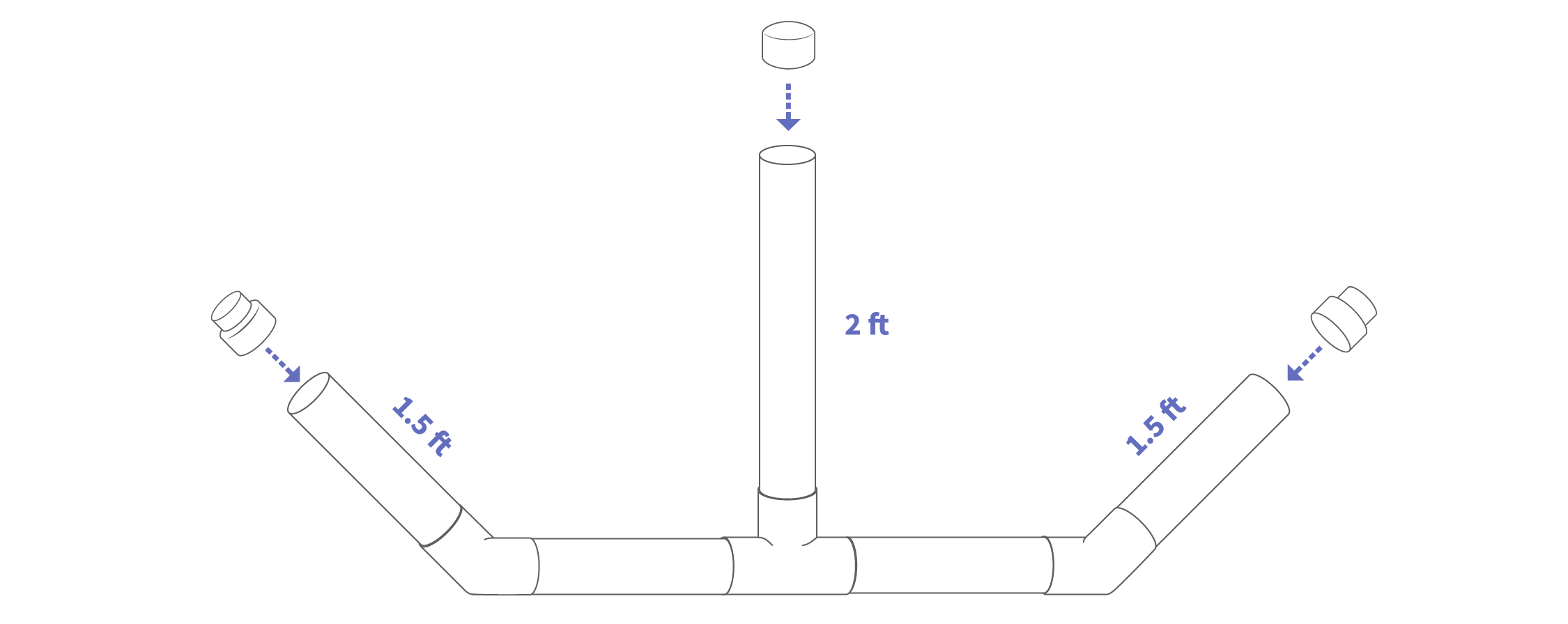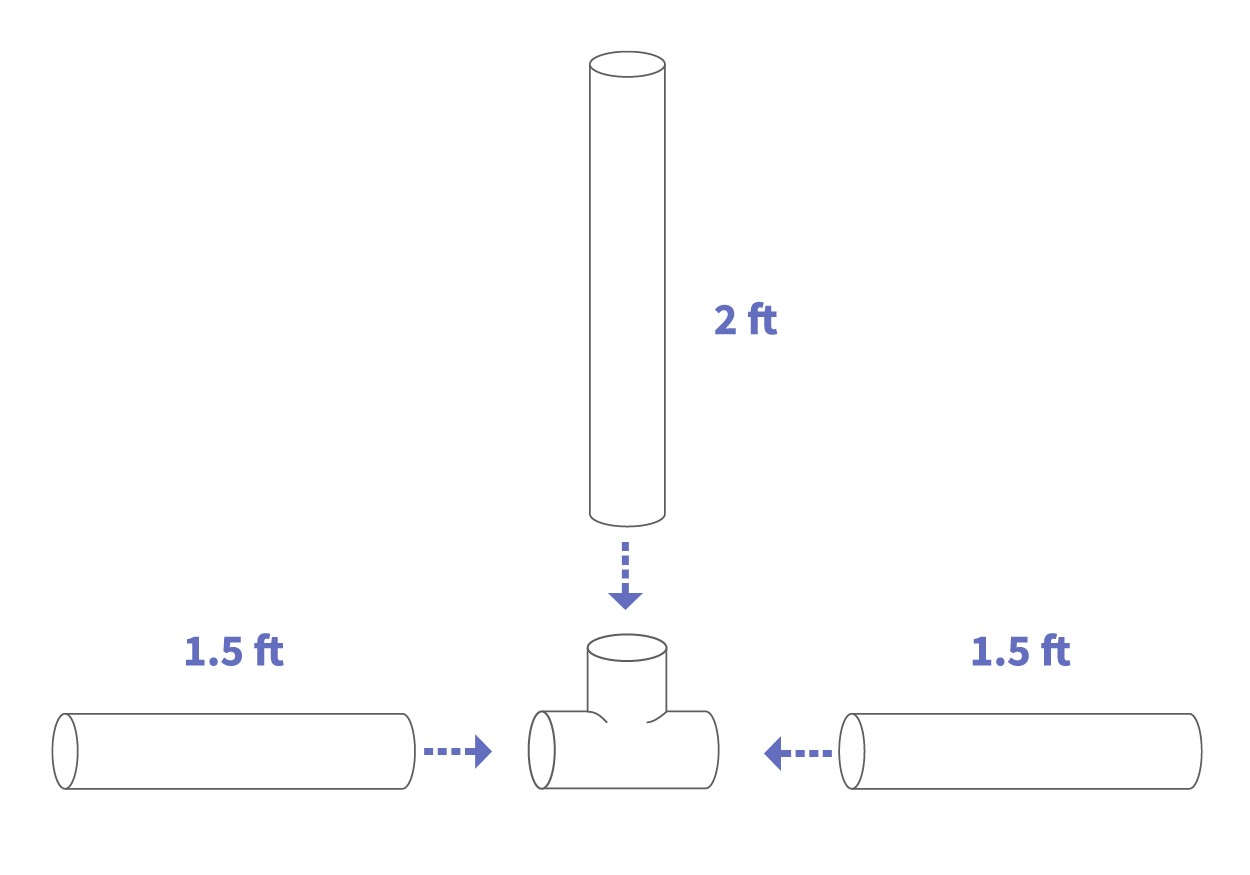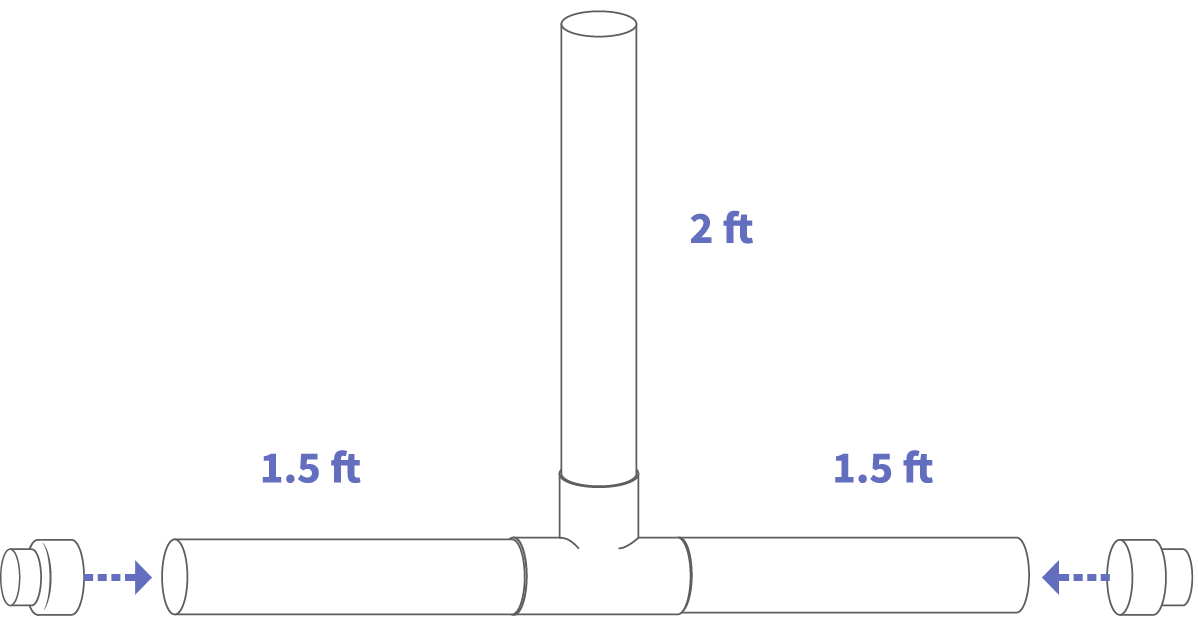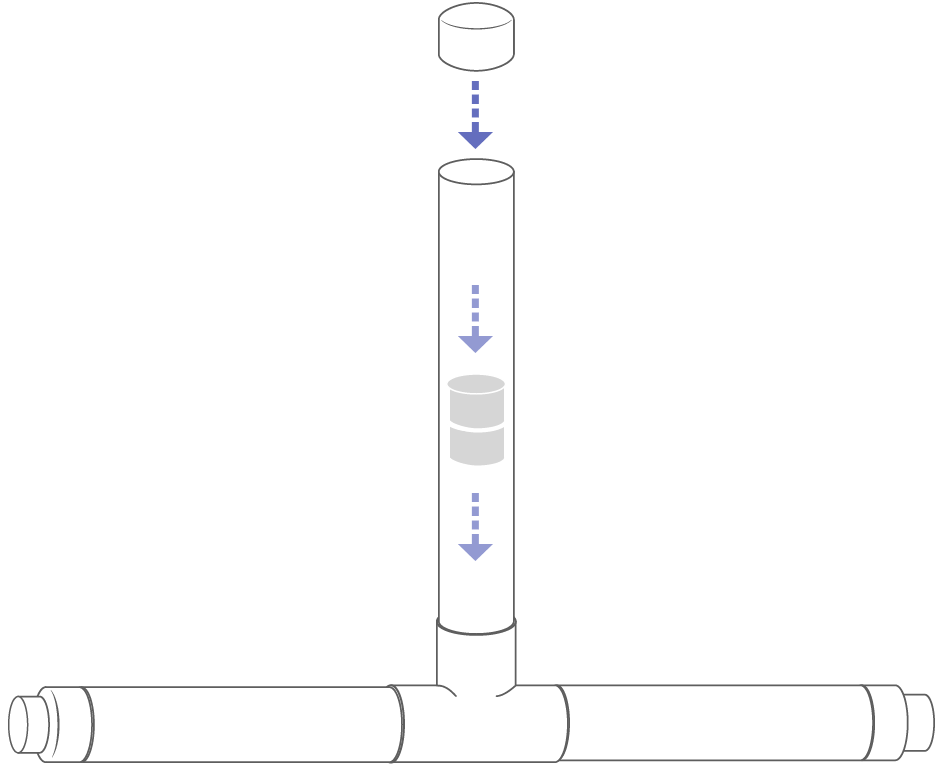Bait Station Construction
T-type bait stations only require basic tools to construct and are very easy to assemble. Below are step-by-step guides for construction of the traditional T-type bait station and two variations.
Jump to: Traditional T-type | Modified T-type | T-type with Flow Restrictor
Jump to: Traditional T-type | Modified T-type | T-type with Flow Restrictor
Traditional T-type bait station
|
Materials
Download these instructions in a PDF |
|
Modified T-type bait station
|
Materials
Download these instructions in a PDF |
4. Place the 45º connectors on the ends of the bait station legs (1.5-foot sections).
5. Place the two remaining 1.5-foot sections on the ends of the 45º connectors. 6. Place the 4-inch to 3-inch reducers on the ends of the extensions
7. Place the end cap on top of the 2-foot section. 8. Attach a service container label near the top of the bait station. |
T-type bait station with flow restrictor
|
Materials
Download these instructions in a PDF |
|


